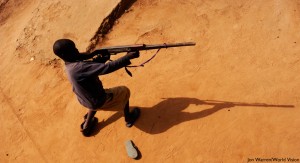January 30, 2013
Dear Mr. President:
The members of the Child Labor Coalition (CLC), representing millions of Americans through unions, human rights organizations, and socially-responsible investment organizations, write in regard to the pending nomination of Secretary of Labor. We urge you to select a nominee who will make protecting children here in the U.S. and abroad a priority—just as Secretary of Labor Hilda Solis has done.
We believe all working youth deserve the strongest labor, health and safety protections. Yet today, children who work in U.S. agriculture do not enjoy the same protections as children who work in other industries, despite the industry’s high injury and fatality rates. Youth working for wages on farms are permitted to work at younger ages, for longer hours, and under more hazardous conditions.
An estimated 300,000 to 500,000 children work for wages in the fields each year. Many children migrate with their parents each year. The impact of migration on the education of farmworker children is often profound, as migrant students are often forced to miss or repeat classes and suffer other educational disruptions. More than half of migrant children will not finish high school, and fewer still will go on to college, trapping most farmworker children in a cycle of poverty.
The next Secretary of Labor has the opportunity to improve child safety in the workplace and ensure that children, regardless of their socio-economic status, have an opportunity at fulfilling their full potential by working hard in school and not in the fields. Internationally, child labor on farms is responsible for over 60 percent of all child labor and exposes a disproportionate number of child workers to hazardous work.
We ask that the nominee demonstrate:
- A deep concern about the plight of migrant farmworker families, especially the children who toil in U.S. fields.
- A determination to seek creative avenues toward ending discrimination in U.S. child labor law and the inequalities that confront children who work in U.S. agriculture.
- A desire to protect children who work in the United States from the most hazardous forms of employment, especially in agriculture.
- An understanding that children and immigrant populations are extremely vulnerable to exploitation, including child labor and human trafficking.
- A commitment to increase child labor enforcement efforts.
- A willingness to seek creative solutions in addressing the worst forms of child labor internationally.
- An eagerness to consult with the NGO community to improve child labor remediation efforts here and abroad.
We respectfully ask you to give these criteria full consideration, and urge you to nominate an individual as Secretary who will work to protect our nation’s greatest and most precious asset—children.



